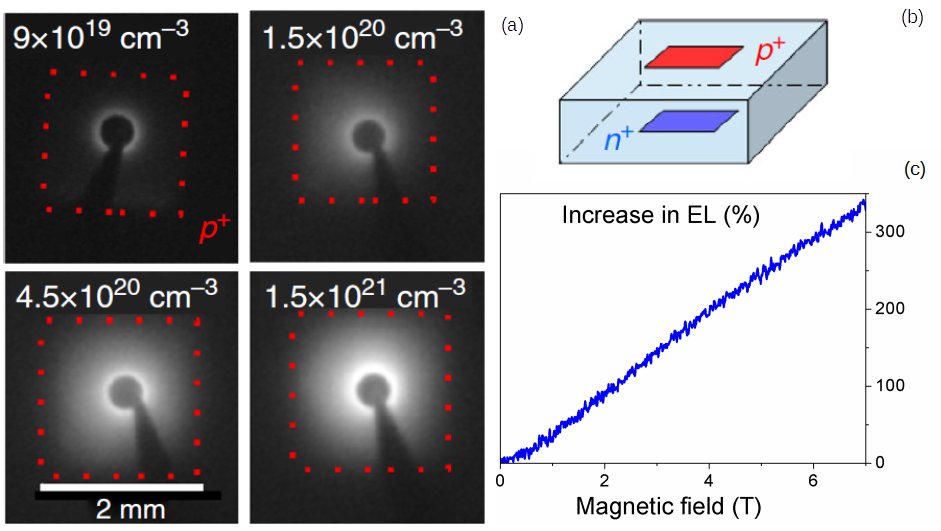Ultra-doped Si LEDs
Contact: Francesca Chiodi
In weakly spin–orbit coupled materials, the spin-selective nature of recombination can give rise to large magnetic-field effects, e.g. on the electro-luminescence of molecular semiconductors.
Silicon has a weak spin–orbit coupling, but observing spin-dependent recombination through magneto-electroluminescence is challenging: silicon’s indirect bandgap causes an inefficient emission and it is difficult to separate spin-dependent phenomena from classical magneto-resistance effects. Here we overcome these challenges and measure magneto-electroluminescence in silicon light-emitting diodes fabricated via gas immersion laser doping. These devices allow us to achieve efficient emission while retaining a well-defined geometry, thus suppressing classical magnetoresistance effects to a few percent. We find that electroluminescence can be enhanced by up to 300% near room temperature in a seven Tesla magnetic field, showing that the control of the spin degree of freedom can have a strong impact on the efficiency of silicon LEDs.

Publications
- Chiodi, F. , Bayliss, S.L., Barast, L., Débarre, D., Bouchiat, H., Friend, R.H., Chepelianskii, A.D., Room temperature magneto-optic effect in silicon light-emitting diodes, Nature Communications 9, 1 December 2018, Article # 398 - https://hal.archives-ouvertes.fr/hal-02399933v1





